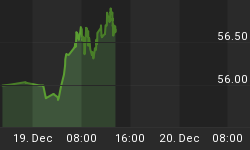Anyone who failed to pay careful attention to the future deficits and national debt projections in President Obama?s budget plan for the coming fiscal year missed a very important wake up call. The Obama budget proposal was not simply another annual Presidential budgetary proposal. It was a stark picture of the severe fiscal challenges that lie ahead for this nation.
The Office of Management and Budget projects in each year over the next decade the ratio of national debt to Gross Domestic Product (GDP) will increase. By 2020, the government?s debts will equal 77.3% of GDP, up from the predicted 63% ratio this year. This level of indebtedness has not been seen in this country since 1950, in the aftermath of World War II. Moreover, these bleak budget projections are based on relatively optimistic economic assumptions. Lower growth would mean less tax revenue, larger budget deficits and a more rapidly increasing debt-to-GDP ratio. Both the Congressional Budget Office and the independent Pew-Peterson Research Institute predict that the national debt will equal 100% or more of GDP by the decade?s end.
Giving the benefit of the doubt to the administration?s projections and assuming that there will be some spending cuts and tax increases, it remains likely that the ratio will continue to climb. The reasons are obvious. Spending cuts and tax increases are unpopular. Elected representatives chase the popular in order to be re-elected. Taking the easy way out, they have repeatedly deferred unpopular decisions by allowing the deficits to rise and the national debt to grow. This time will not be different.
It is also important to keep in mind that the administration?s deficit projection assumes passage of the tax increases he proposed for high income individuals and families.
For investors, the critical issues are: (1) who will fund a national debt that is growing faster than the GDP and (2) whether Treasury bond yields will need to rise in order to attract those investors.
Some commentators suggest that the American public will spend less, save more and that those savings will be invested directly or indirectly in treasuries. While recent trends support such a conclusion, the long ingrained consumption habits of American consumers will not be easily broken. Once the economy stabilizes, consumption patterns are likely to resume.
Foreign governments and foreign investors currently hold over 25% of our national debt. There are reasons to doubt that they will buy sufficient treasuries to fill in the gap. China illustrates the problems. It has been the biggest net purchaser of our debt over the past decade, but China is now openly expressing concern about our deficits. China has curtailed its purchases of treasuries and is increasingly using its horde of dollars to purchase natural resources and international stocks. China and other international investors are likely to step back from treasuries as it becomes clear that rates will rise and the value of the underlying bonds will fall.
The Federal Reserve has been the ultimate buffer against rising treasury rates during this severe recession. The national debt to GDP ratio has skyrocketed from 40% in 2008 to the projected 63% this year ? a more than 50% increase in the ratio. This represents a profound change in our fiscal solvency but it is hardly known by the general public. In the face of this increase, the Fed has managed to keep treasury rates low by using a variety of tools:
-
It lowered the federal funds rate from 5.25% to less than 0.25% at present, thereby placing downward pressure on all interest rates;
-
It engaged in quantitative easing. The Fed directly purchased $300 billion in long term treasuries. It purchased over $1.2 trillion of mortgage backed securities, indirectly freeing up funds for investment in treasuries
-
It further engaged in quantitative easing by allowing rapid growth in the money supply. Banks have been allowed to borrow from the Fed at historically low interest rates, then turn around and invest those funds in longer term treasuries, thereby reaping substantial profits and restoring their balance sheets. Money has thus been diverted from loans for commerce to investment in treasuries.
The Fed?s efforts to monetize the debt spurt are now being curtailed. With the funds rate at zero, the bottom of that barrel has been reached. The Fed has announced that it will halt most of its quantitative easing programs in part out of concern about the rising balance of such obligations on its books.
Bottom line: If the administration?s budgetary projections are correct, the national debt to GDP ratio will climb from 40% in 2008 to 77.3% in 2020. Even if we are able to curb future deficits, it is likely that this ratio will grow over the next decade. As a result, rates on treasuries and other debt obligations are likely to climb over the coming decade with profound implications for the debt and stock markets.















